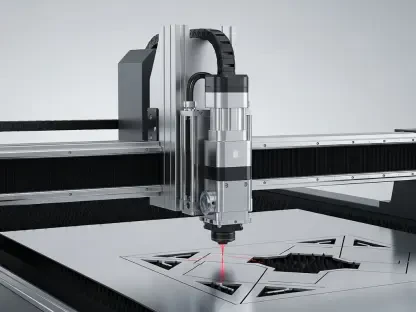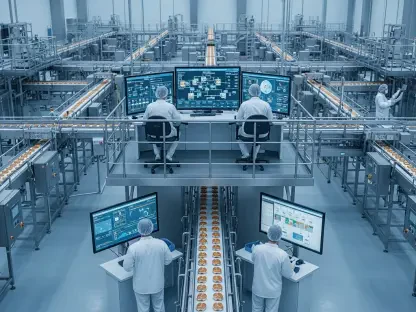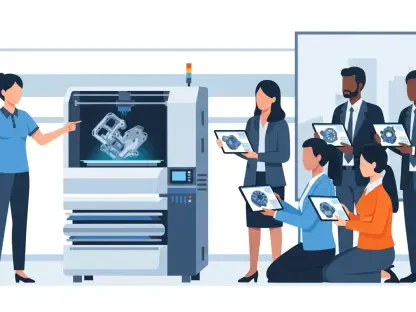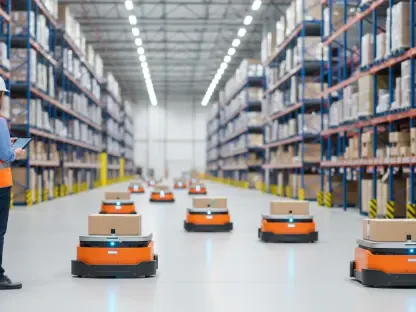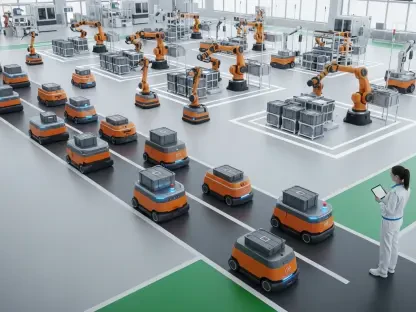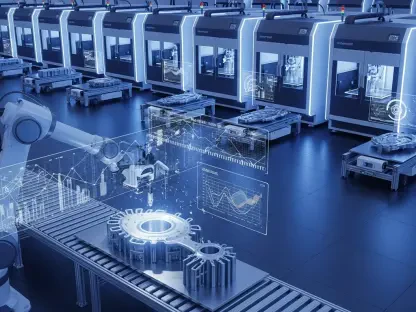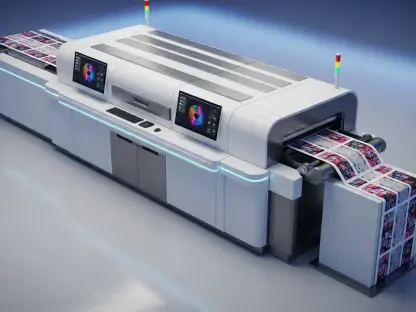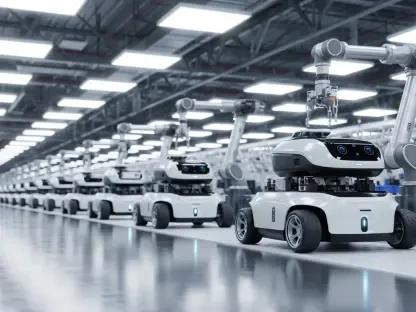I’m thrilled to sit down with Kwame Zaire, a renowned manufacturing expert with a deep passion for electronics, equipment, and production management. With his extensive knowledge in predictive maintenance, quality, and safety, Kwame brings a unique perspective on how industries can transform their operations for a sustainable future. Today, we’ll dive into the complexities of achieving net zero emissions in manufacturing supply chains, exploring innovative strategies, the power of collaboration, and the role of consumer-focused solutions in driving environmental impact. Our conversation touches on ambitious goals, practical challenges, and the exciting potential for scalable change across the sector.
Can you explain what it means for a manufacturing company to target net zero emissions across its entire supply chain by a specific deadline like 2040?
Absolutely. Aiming for net zero by 2040 means a company commits to eliminating or offsetting all greenhouse gas emissions from every part of its operations—from sourcing raw materials to manufacturing, distribution, and even retailer partnerships. It’s a holistic approach that requires rethinking processes at every stage. This isn’t just about cutting emissions in-house; it’s about working with suppliers, logistics partners, and beyond to ensure the entire value chain aligns with that goal. It often involves a mix of reducing emissions directly through cleaner technologies and balancing any remaining footprint with solutions like carbon capture or reforestation projects. The deadline adds urgency, pushing for innovation and accountability.
What do you see as the biggest hurdles in decarbonizing such a vast and interconnected supply chain?
The challenges are immense because supply chains are so complex. First, there’s the sheer diversity of players involved—suppliers, manufacturers, and distributors often operate in different regions with varying regulations and access to green tech. Getting everyone on the same page is tough. Then, there’s the issue of data transparency; accurately measuring emissions across tiers of suppliers is a logistical nightmare. Cost is another barrier—switching to renewable energy or sustainable materials often requires upfront investment, which can be a hard sell for smaller partners. Finally, entrenched practices and resistance to change can slow progress. It’s a balancing act of pushing for innovation while maintaining operational stability.
How can science-based targets for an interim year, say 2030, help a company stay on track for a long-term net zero goal?
Science-based targets are critical because they ground ambitious goals in reality. By setting a milestone like 2030, a company can break down the journey into manageable steps, ensuring they’re aligned with what climate science says is necessary to limit global warming. These targets often focus on specific reductions—like slashing operational emissions by a certain percentage or shifting to renewable energy—and provide clear benchmarks to measure progress. They also build momentum; hitting a 2030 goal boosts confidence and credibility for the 2040 vision. Plus, they force companies to act now rather than delay tough decisions, fostering a culture of continuous improvement.
In terms of sustainable packaging, what strategies can manufacturers adopt to make all their consumer packaging recyclable or reusable by a set date?
Moving to fully recyclable or reusable packaging is a game-changer, but it requires a multi-pronged approach. First, manufacturers need to redesign products using materials that are easier to recycle, like mono-materials instead of complex composites. Partnering with material scientists to innovate biodegradable or compostable options is key. Then, there’s the supply chain angle—sourcing sustainable materials at scale while keeping costs in check. Collaboration with recycling industries to ensure infrastructure can handle new designs is also crucial. Finally, educating consumers on how to dispose of or reuse packaging closes the loop. It’s about systemic change, not just a quick fix, and often involves pilot programs to test and refine solutions before full rollout.
How can a company transition to 100% renewable electricity in its operations, and what obstacles might they face in the final stretch?
Getting to 100% renewable electricity starts with a solid strategy—investing in onsite solutions like solar panels or wind turbines where feasible, and securing power purchase agreements for offsite renewables. It’s also about auditing energy use to prioritize efficiency, so you’re not just swapping sources but reducing demand. The last push to 100% is often the hardest. Some facilities might be in regions with limited access to renewable grids or where infrastructure isn’t ready. Regulatory barriers or higher costs in certain areas can stall progress too. Overcoming this requires creative partnerships with local governments or energy providers and sometimes advocating for policy changes to unlock renewable access. Persistence and flexibility are everything.
Why is collaboration with suppliers so essential for reaching net zero, and how can programs support them in this journey?
Suppliers are the backbone of any supply chain, often accounting for a huge chunk of emissions—sometimes more than the company’s own operations. Collaborating with them isn’t optional; it’s essential. By working together, companies can share best practices, provide tools for tracking emissions, and even co-invest in green technologies. Support programs play a huge role here. They might offer training on sustainability practices, access to data platforms for monitoring progress, or financial incentives to adopt cleaner processes. These initiatives build trust and capacity, turning suppliers into true partners in the net zero mission rather than just vendors. It’s about creating a ripple effect of change upstream.
Can you share some examples of how product innovation in manufacturing can help consumers reduce their own environmental footprint?
Absolutely, product innovation is a powerful lever. Take laundry detergents as an example—formulating them to work effectively in cold water can cut energy use significantly since heating water is a major source of household emissions. Encouraging consumers to switch to cold washes through clear labeling and marketing campaigns makes a big difference. Another area is durable goods; designing products that last longer or can be easily repaired reduces waste. Even small tweaks, like concentrated formulas that use less packaging, empower consumers to lower their impact without changing habits drastically. It’s about embedding sustainability into the user experience so it feels seamless.
What role do partnerships with private, nonprofit, and public sectors play in driving large-scale sustainability changes in manufacturing?
These partnerships are vital for tackling systemic issues that no single company can solve alone. Private sector collaborations might focus on developing shared technologies or supply chains for sustainable materials. Nonprofits often bring expertise in conservation or community engagement, helping to design initiatives that have broader social benefits. Public sector involvement is key for infrastructure—think renewable energy grids or low-carbon transportation networks. Governments can also provide policy support, like subsidies or regulations that level the playing field for green practices. Together, these partnerships create an ecosystem where large-scale change, like decarbonizing entire industries, becomes feasible through combined resources and influence.
Looking ahead, what is your forecast for the future of sustainable manufacturing and supply chain decarbonization?
I’m optimistic but realistic. The future of sustainable manufacturing hinges on accelerated adoption of technology—think AI for optimizing energy use or advanced materials that cut emissions. I see supply chain decarbonization becoming non-negotiable as consumer demand for transparency grows and regulations tighten. We’ll likely see more collaborative models, where companies pool resources to solve shared challenges, and circular economy principles will dominate, with reuse and recycling built into every process. The pace depends on investment and policy support, but I believe we’re on the cusp of a tipping point where sustainability isn’t just a nice-to-have—it’s the core of how business gets done. The next decade will be defining.


